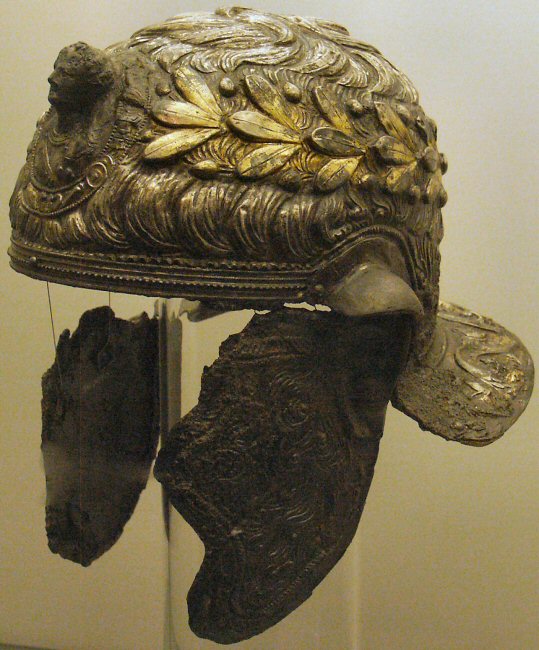








|
|
Ancient Roman glue still sticks
December 14th, 2007
"It's a sensational find and a complete stroke of luck that we were still able to find traces of the substance after 2,000 years," says Frank Willer, the museum's chief restorer.
Willer found traces of the superglue while examining a helmet unearthed in 1986 near the German town of Xanten, on what was once the bed of the Rhine.
"The helmet, which dates from the 1st century B.C., was given to the museum for restoration. I discovered the glue accidentally, while removing a tiny sample of metal from the helmet with a fine saw. The heat from the tool caused the silver laurel leaves on the helmet to peel off, leaving thread-like traces of the glue behind," Willer said.
Willer was amazed to discover that despite such a long exposure to water, time and air, the superglue did not lose its bonding properties.
Other known Roman battle accessories have silver decorations which most likely had been glued to the iron with the same adhesive and technique. Unfortunately, the objects are too deteriorated to find traces of this superglue.
Luckily, the helmet unearthed at Xanten featured enough glue material to determine how the adhesive was made.
|

© Photo Jasper Oorthuys and Jenny Cline.
Click the image for more pictures.
|
"Analysis shows that the Roman glue was made of bitumen, bark pitch and animal grease," Willer said.
The discovery confirms studies done by researchers at the University of Bradford and Liverpool, U.K., in the 1990s.
Analysis carried at that time on an ancient Roman jar showed that when Roman people broke their pots, they glued them back together with a compund "derived largely from birch bark."
Unfortunately, until today, the efforts of the German researchers were not enough to recreate the Roman superglue.
"We think that some inorganic material such as soot, sand and quartz, might have been added to make the mixture stickier," Willer said.

|
|
|